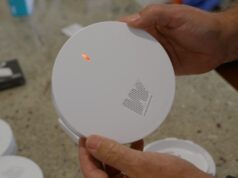
Power points might not be the most exciting part of a renovation, but get them wrong and you’ll quickly notice, especially when you’re struggling to plug in your vacuum, or running extension cords across the kitchen. Whether you’re renovating a single room or your entire home, planning the height and location of your power outlets is essential for safety, compliance, and day-to-day convenience.
Here’s what Australian renovators need to know when it comes to the correct positioning of power points in 2025.
General height guidelines for power points
In most Australian homes, power points are installed at about 300mm above finished floor level (AFL) in living rooms, bedrooms and hallways. This is both a practical and comfortable height for general use and aligns with the Liveable Housing Design Guidelines (Gold Level), which promote accessibility across all ages and abilities.
There’s no strict minimum height set by the wiring rules (AS/NZS 3000:2018), but outlets should always be easy to access and not hidden behind fixed furniture or joinery. All power points must be switched, meaning they have a built-in on/off switch controlling the active wire.
Kitchen outlets: Avoid clutter, plan smart
Kitchens demand careful planning. You’ll want outlets above your benchtops for small appliances, as well as hidden ones for fridges, dishwashers, and microwaves.
The common approach is to place general-use kitchen power points around 150mm above the benchtop, which puts them at about 1050mm AFL, depending on your bench height. Try to avoid placing them directly under overhead cabinets or in locations that create messy cable runs. It’s also a good idea to keep them towards the ends of your benches, especially on islands, to avoid trailing cords across food prep areas.
For appliances like dishwashers or rangehoods, outlets should be installed in nearby accessible cupboards, not directly behind the appliance itself—this allows for safe and legal disconnection if needed.
Bathrooms and wet area considerations
Bathroom power points are strictly regulated due to water hazards. The key rules follow the AS/NZS 3000 wiring zones. As a guide:
- Outlets must be at least 150 mm horizontally away from the edge of a basin that holds less than 45L.
- They must also be a minimum of 400mm above the top of the basin.
- For larger water containers (over 45L), such as laundry tubs, the clearance increases to at least 1m above and 0.5m horizontally from the fixture.
To ensure everything complies with current regulations, only licensed electricians are permitted to install or move power points in wet areas.
Outdoor power points
If you’re adding power outside for lights, garden equipment or outdoor kitchens, outlets need to be weatherproof, RCD protected and installed at a safe height. The standard height for outdoor outlets is at least 300mm above ground level, but they can be installed higher depending on use, up to around 2m.
Outlets must also comply with spacing regulations: no part of the outdoor perimeter of your home should be more than 7.5m from an outlet.
Look for outlets with a suitable IP rating (such as IP53 or higher) for protection from dust and water.
Safety protections and wiring
All new or altered circuits in your renovation must include RCD protection (safety switches), which instantly cut off electricity in the event of a fault. This is mandatory under Australian law and critical for personal safety.
Electricians must also check polarity (i.e. correct wiring of the active and neutral connections) and issue a certificate of compliance for the work. This is essential if you ever need to make an insurance claim or sell your property.
Smart upgrades and futureproofing tips
If you’re renovating, now’s the perfect time to add a few extras:
- USB outlets are handy in kitchens, offices and bedrooms.
- Media areas benefit from multiple outlets (and maybe even in-wall cabling) for TVs, soundbars, game consoles and more.
- Garage power can cover tools, battery chargers, and even electric vehicle infrastructure.
- Don’t forget hallways or entry points for robot vacuums and security cameras.
- Consider smart switches or power points if you’re integrating home automation.
Think about how you live—and charge—and plan accordingly. It’s often cheaper to install more now than to add them later.
Final thoughts
Power point placement might feel like a small detail in your renovation, but it can make a huge difference in how your home functions. Talk to your electrician early in the planning process to map out where outlets will go in each room, and always work with a licensed professional to ensure your setup is safe, compliant and built for the long haul.
By getting the basics right now, you’ll avoid headaches later and make your home more practical, liveable and future-ready.




